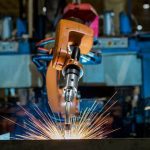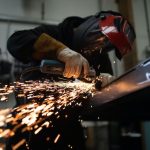In the manufacturing industry, CNC turning machines are widely used for the efficiency, consistency, and accuracy they provide, which is nearly impossible to achieve manually. Manufacturing operations in a CNC turning center have become tremendously easier thanks to these CNC machines. CNC machines are not only confined to the manufacturing sectors. Even people engaged in jewelry-making use these machines to achieve impeccable cut precision and better finishing.
However, working with a CNC turning machine is not child’s play. CNC beginners should fully acquaint themselves with these machines to perform complex cutting and engraving tasks.
Here are PunchlistZero’s top eight CNC engraving tips:
1. Selecting the Correct CNC Cutting Tool Configurations
CNC machines come in different configurations. Operators select any specific configuration base on their requirements.
For instance, if an operator is aiming for a rough upper surface with a smooth bottom of their woodwork, UP spiral bits would be an appropriate configuration. Likewise, if the end goal of woodwork is to achieve a rough bottom, a down spiral bit configuration would be more suitable.
2. Control the Speed of The Spindle
Spindle speed drastically affects the quality of the finished product. Most experts recommend opting for small shank tools (3.175mm in length and 4.0 mm in breadth) with low-power spindle motors that should be used for optimal results.
Moreover, the cutting speed should never be set too fast to ensure minimal resistance in high-speed milling. Otherwise, the cut can end up being too large.
3. Be Mindful of Potential Reasons Why the Tools Break
Of all the CNC engraving tips, this might be the most obvious, yet most overlooked.
Like any machine, CNC machines are equally vulnerable to break. Thus, technicians and operators need to be aware of factors that may lead to frequent break down of the CNC turning center. Some possible factors worth considering are carving settings, motor precision, fixture issues, plate material hardiness, or fluid levels.
In addition, the excess environmental temperature can increase the risk of wearing and tearing the machine. Sometimes, incorrect programming can also lead to operational failure. Thus, making notes of possible reasons for the damage to the CNC machine and its components is highly recommended.
4. Length of The Blade
The length of the blade is an essential factor in efficiently operating CNC machines. Blades should be longer as longer blade length enhances the effectiveness of the carved knife.
Adding 2-3mm of thickness to the measured processing sheet is often suggested for increasing the blade’s effectiveness when working with hard material. On the other hand, when working with soft material, a smaller blade is deal to carve the material.
5. Know the Basics of CNC CAM Software
CNC machines are operated through computers, which requires feeding the system with relevant sets of codes. Thus, feeding the right information to the system software is essential to avoid operational failure.
Even the slightest X and Y coordinates error can result in rough or inaccurate cutting. Conceptually understanding the CNC CAM software and further knowing the fundamentals of programming the system are essential prerequisites to operating CNC machines.
6. Learn about Basic Measurements of CNC Tools
Correct measurements equate to increased accuracy in the machining process. Cutting complex materials require in-depth awareness of accurate measures of tools and materials.
Thus, manually understanding the optimal measurements for different components of the CNC machines is important. Operators should also learn the basics of correctly using a micrometer, caliper, and dial test indicator.
7. Engraving Attachment Matters Too!
Most operators tend to use CNC machines without considering an engraving attachment. This could be because engraving attachments may not be needed for their individual requirements.
However, combining the engraving attachment with the 3D CNC machining capabilities can offer even more creative opportunities to users. For instance, adding engraving attachments allows operators to engrave their brand or design into the cut materials.
8. Understand the G Codes
G codes in CNC machines govern the motion of the machine during material cutting. Understanding G codes lets users define the coordinates and speed of the CNC machines.
For example, a G01-coded machine moves in a straight line and operates at the speed that is fed to the system. Correctly programming the G-codes can help streamline the entire machining process.
Conclusion
Any CNC turning machine requires extensive familiarity with operating such a complex system. Failing to learn about them may lead to serious mistakes in operations and even pose life-threatening threats.
CNC machine operators, especially CNC beginners, should always begin with the basics, where they acquaint themselves with how to program their CNC system and modify and refine their desired accuracy. These CNC engraving tips mentioned above allow for efficient CNC machine operation and help improve the machine operating skills and the quality of the finished part.
This article is provided courtesy of Vincent Hua, the Marketing Manager at TSINFA. Vincent is passionate about helping people understand high-end and complex manufacturing processes. Besides writing and contributing his insights, Vincent is very keen on technological innovation that helps build highly precise and stable CNC Machinery.



